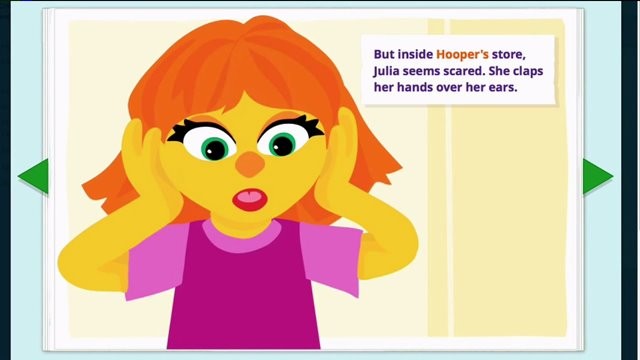
By Dr. Michelle Hintz, Psychologist, For SouthFloridaReporter.com, Nov. 13, 2015 – Over the last few days, a story about a haircut in Wales has been hopping around social media sites. It’s identifiable by the picture of a young boy and a man lying on their

stomachs on a barber shop floor, where the trim took place. People around the world are touched by the thoughtfulness of this barber towards his young customer, Mason, who had been diagnosed with autism a few months earlier.
Autism spectrum disorder, though well-known these days, is still poorly understood. Part of this is due to the wide spectrum encompassed by the label. Sesame Street recently introduced a new character: a muppet named Julia, who has ASD, along with an entire autism-focused initiative aptly named, “Sesame Street and Autism: See Amazing in All Children.” Even though Julia only represents one manifestation of autism, the overall message of inclusivity has the potential to be felt across the spectrum.
The initiative’s overall goal is to reduce the stigma of autism. This has been years in the making for Sesame Street Workshop, based on thorough academic research, and its intended audience is both the general public and families with kids with autism. For now it is only online and in print materials, but these are extensive, ranging from digital story cards with a free app, to daily routine cards, to videos for parents and kids about all types of interactions.
In the past, children were taught that it was rude to stare or ask questions about their peers on the spectrum, according to Jennifer Dibona, mother to a 6-year old son with autism, in an interview with the University of Washington press. This generates a stigma around the disorder because kids just don’t understand it. Dibona went on to say she even felt this discomfort as an adult with her own child.
The Sesame Street and Autism initiative is a huge turning point because it endeavors to normalize autism. It speaks to children on their level from the perspective of a child with autism, explaining why the child is acting differently. With this new positive framing, they make it possible to highlight how we are all the same. They show children with autism doing similar activities, like playing with toy trains and having fun with their families.
It’s natural for us to gravitate towards the familiar, towards people like us. Being confronted with someone different, who communicates and behaves a little differently, can be stressful and cause anxiety. These facts are true for all ages. The Sesame Street materials aim to increase understanding, thereby reducing that fear. They create a necessary familiarity. At the same time, the message points out how we should value our differences. As the video “The ‘Amazing’ Song” says, “each kid is amazing, each in their own way.”
Opening up this dialogue will hopefully lead to less awkwardness. Dibona has already found the online materials useful. In the past when a fellow parent asked what to tell their child before a playdate with her son, she found herself at a loss. It’s hard to explain. But now she can simply say, let me send you the link to a helpful video.
As the haircut story shows us, taking a second to understand our fellow human beings better can make a big difference. Learning to search for the amazing in people can open up many doors. Laura McKenna, another mother of an autistic child, who wrote a piece on Julia for The Atlantic, summed it up well. She said that “a little knowledge and sensitivity goes a long way.”












